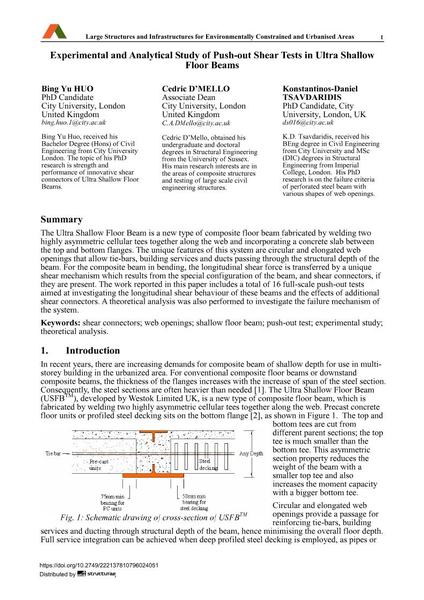Experimental and Analytical Study of Push-out Shear Tests in Ultra Shallow Floor Beams

|
|
|||||||||||
Bibliografische Angaben
| Autor(en): |
Bing Yu Huo
Cedric D'Mello Konstantinos-Daniel Tsavdaridis |
||||
|---|---|---|---|---|---|
| Medium: | Tagungsbeitrag | ||||
| Sprache(n): | Englisch | ||||
| Tagung: | IABSE Symposium: Large Structures and Infrastructures for Environmentally Constrained and Urbanised Areas, Venice, Italy, 22-24 September 2010 | ||||
| Veröffentlicht in: | IABSE Symposium Venice 2010 | ||||
|
|||||
| Seite(n): | 174-175 | ||||
| Anzahl der Seiten (im PDF): | 8 | ||||
| Jahr: | 2010 | ||||
| DOI: | 10.2749/222137810796024051 | ||||
| Abstrakt: |
The Ultra Shallow Floor Beam is a new type of composite floor beam fabricated by welding two highly asymmetric cellular tees together along the web and incorporating a concrete slab between the top and bottom flanges. The unique features of this system are circular and elongated web openings that allow tie-bars, building services and ducts passing through the structural depth of the beam. For the composite beam in bending, the longitudinal shear force is transferred by a unique shear mechanism which results from the special configuration of the beam, and shear connectors, if they are present. The work reported in this paper includes a total of 16 full-scale push-out tests aimed at investigating the longitudinal shear behaviour of these beams and the effects of additional shear connectors. A theoretical analysis was also performed to investigate the failure mechanism of the system. |
||||
| Stichwörter: |
Push-Out Versuch
|
||||
